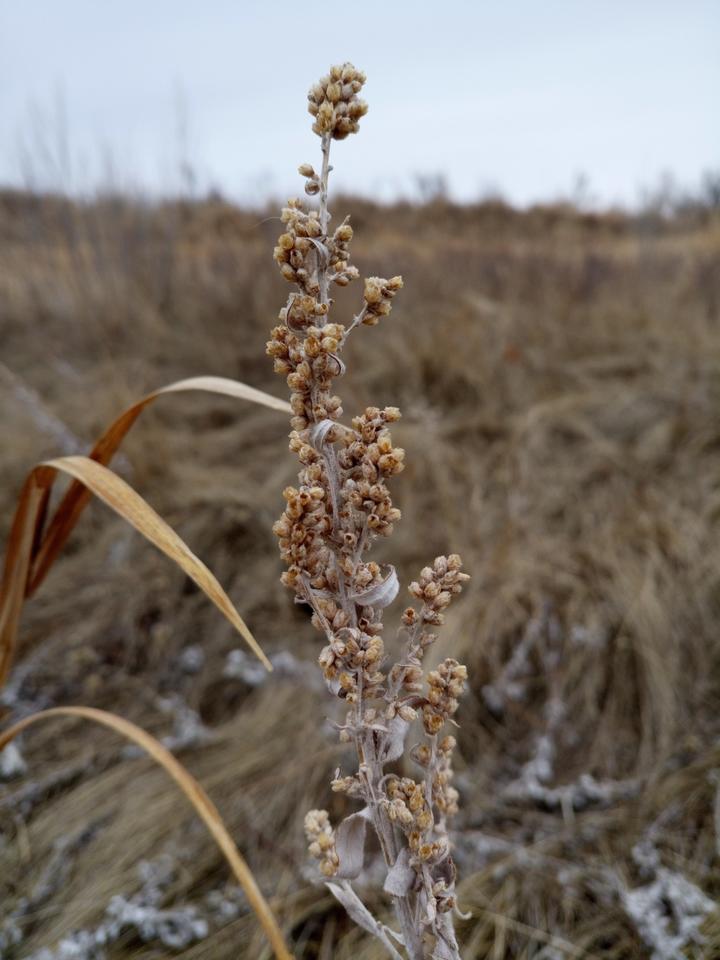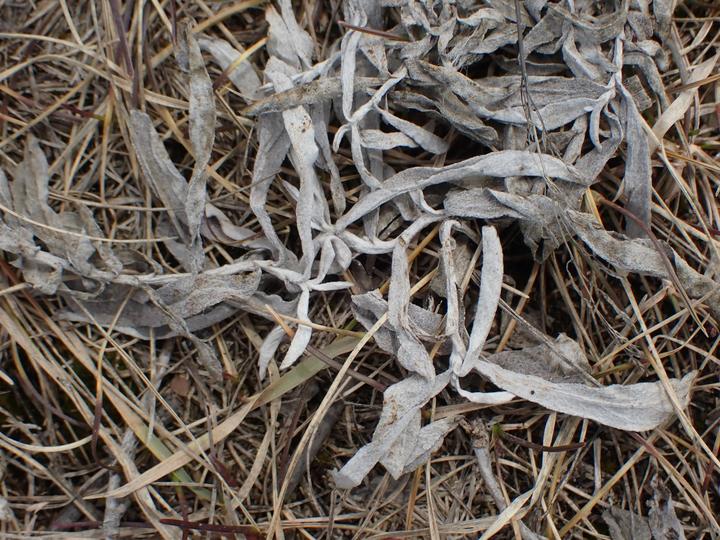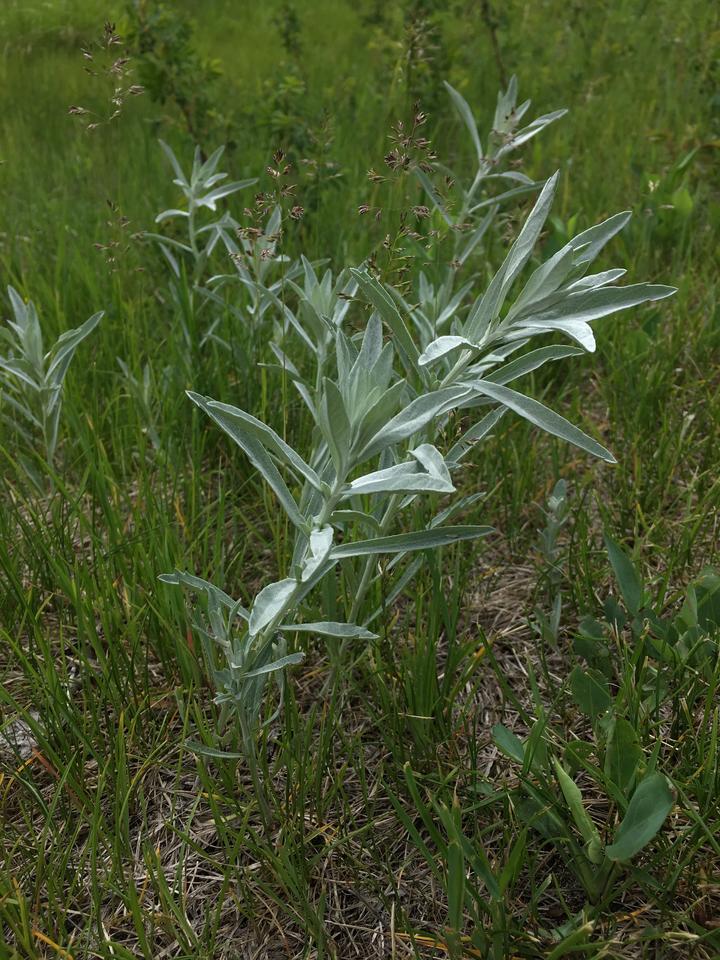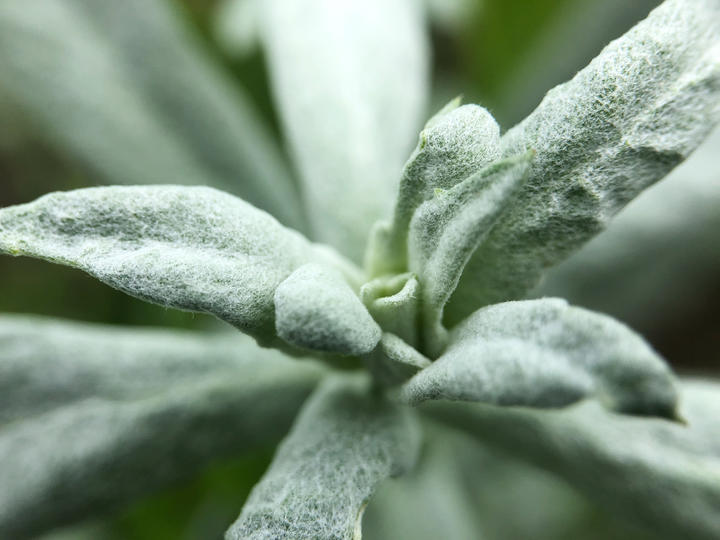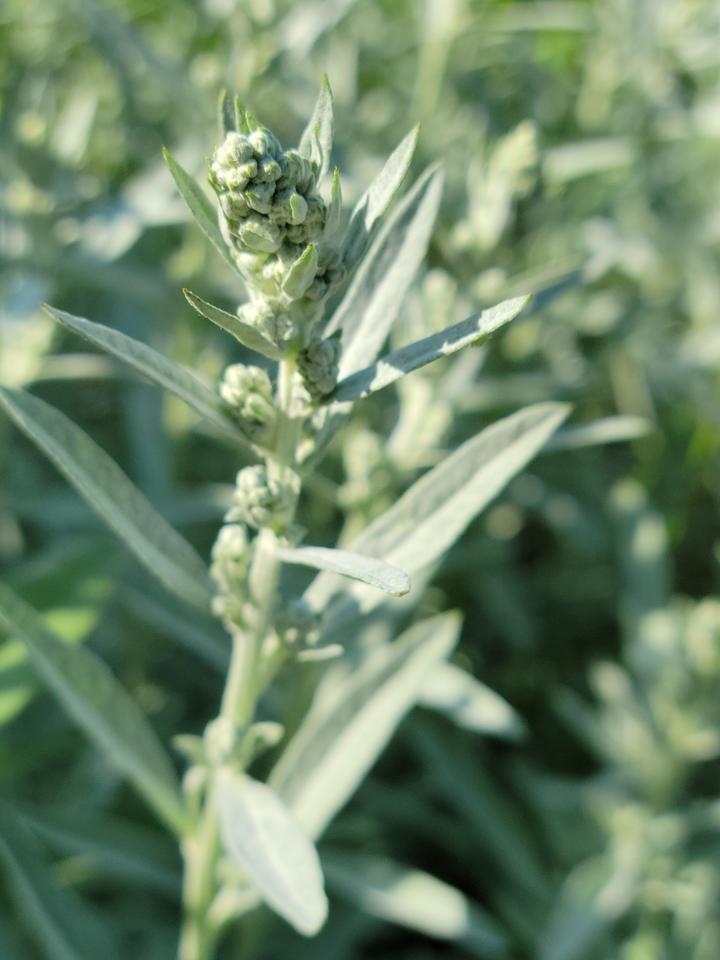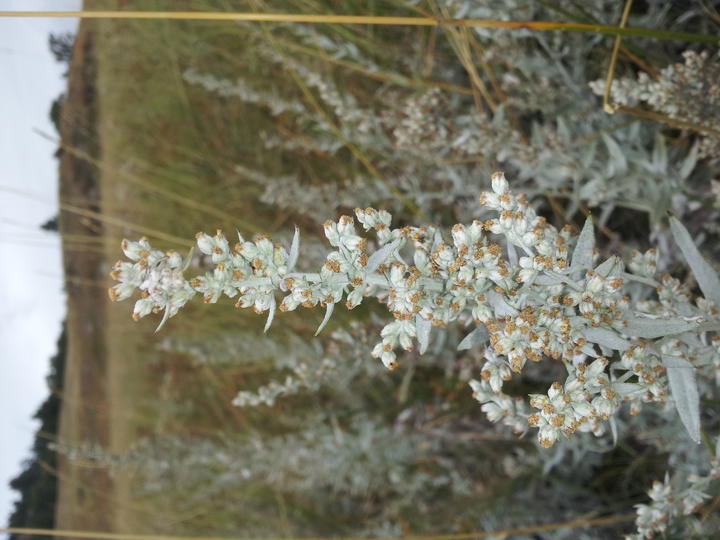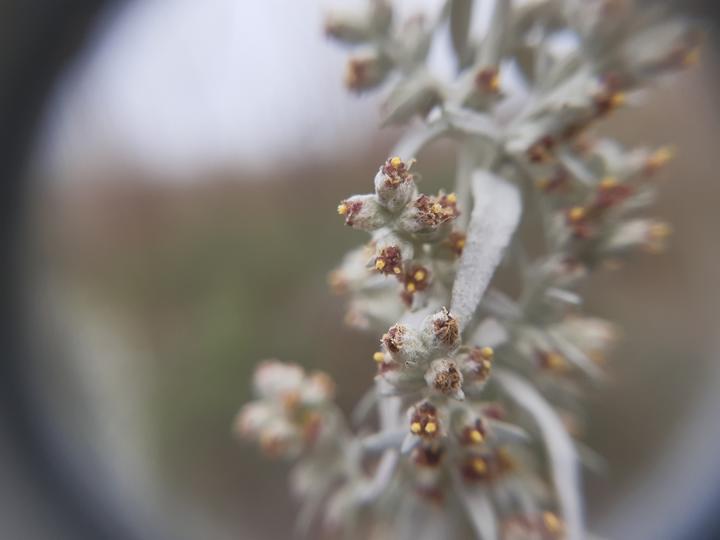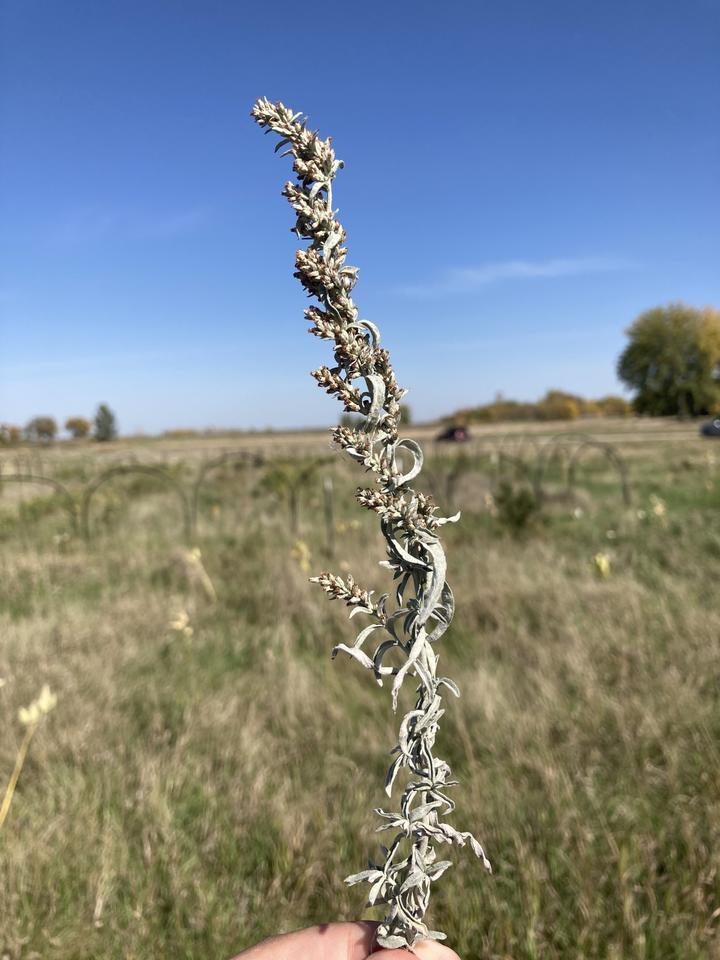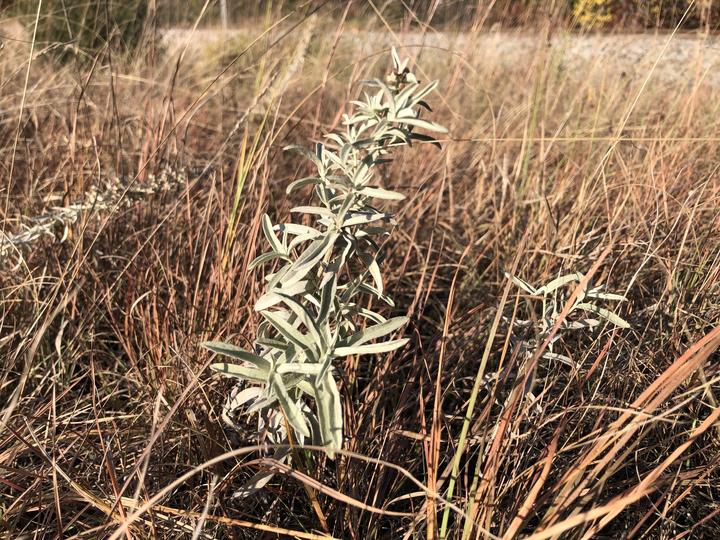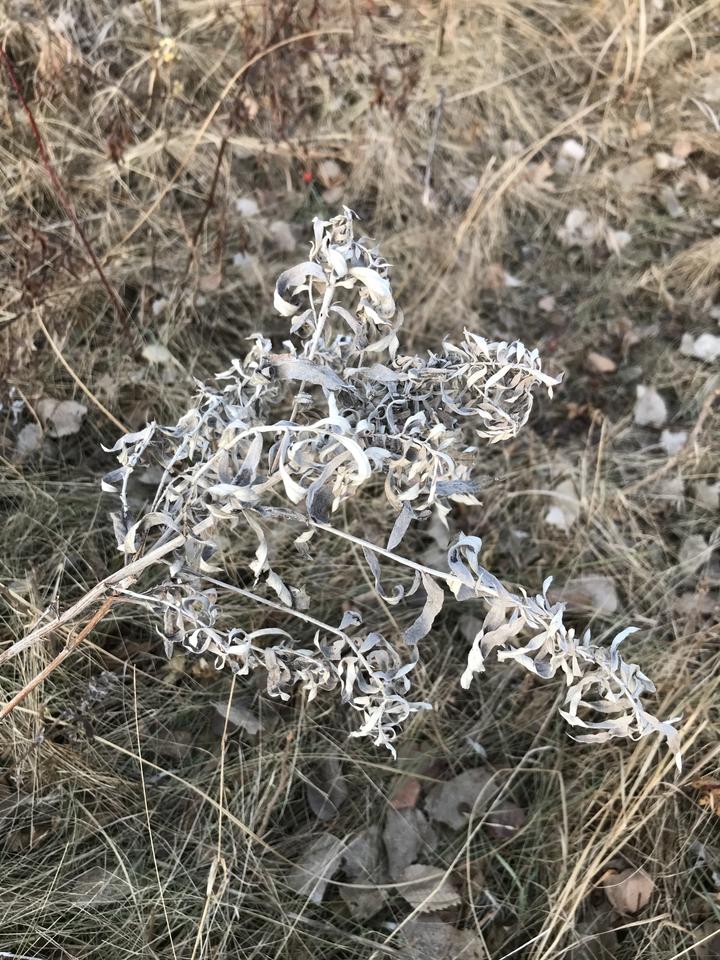More names for this plant
Dakota: Peżiḣota
The Dakota and Anishinaabe were among the earliest people to name Minnesota’s plants and animals, as well as to understand them in relation to Minnesota’s climate and seasons. Those original names are still in use, and several are included on the Season Watch website. However, complete translations were not available.
Latin (or scientific name): Artemisia ludoviciana
The scientific community has a convention of assigning agreed-upon Latin names to every kind of organism. Using scientific names helps people communicate confidently about the same organism and organize lifeforms based on how closely related they are.
More common names: Cudweed sagewort, gray sagewort, Louisiana sagewort, Louisiana wormwood, mugwort wormwood, prairie sage, sage, sagebrush, silver wormwood, western mugwort, white sagebrush
Page contents
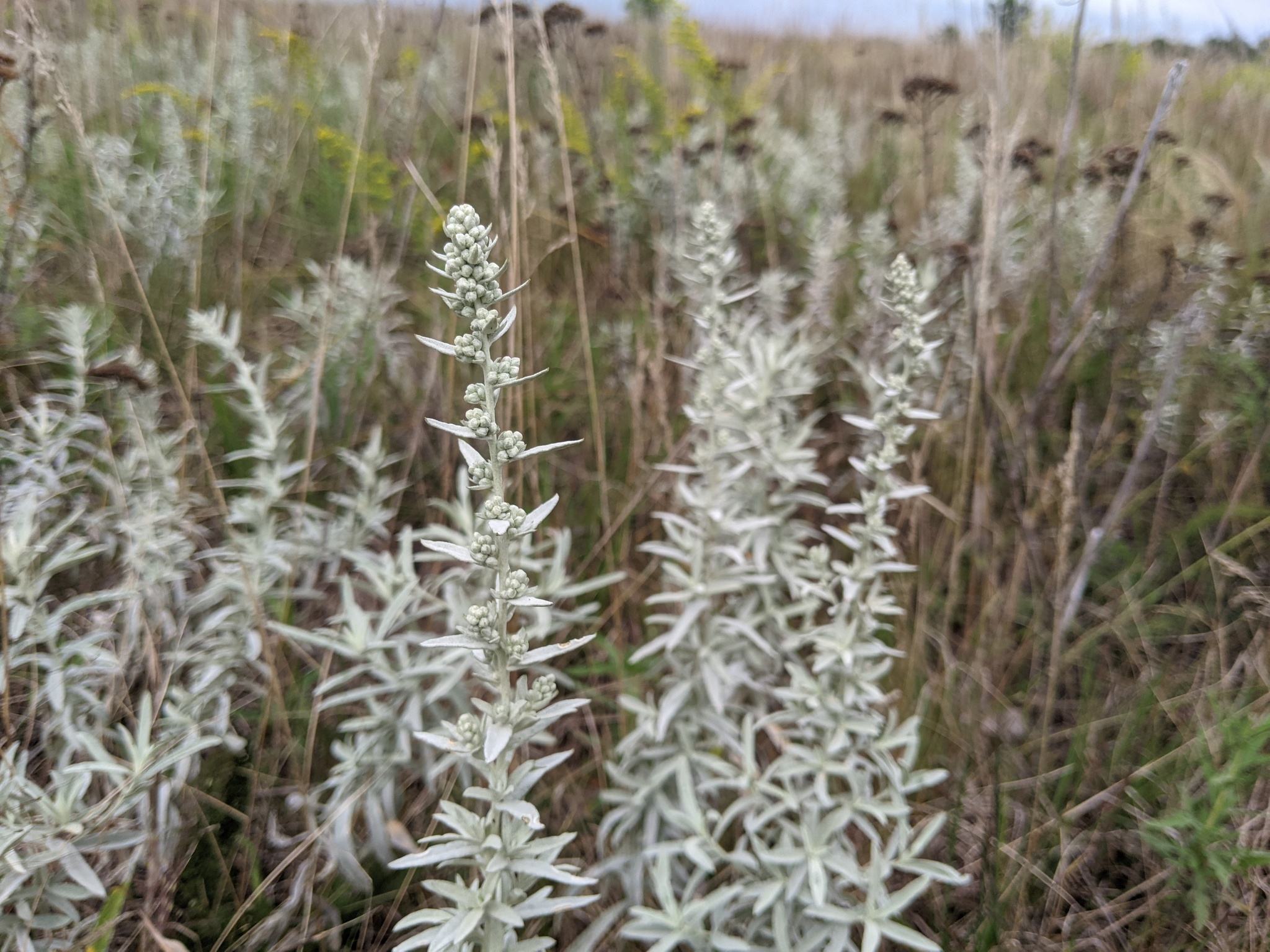
August 27, 2022, Washington County, Minnesota
Photo © Nate Martineau, some rights reserved (CC-BY-NC)
iNaturalist observation
About white sage
- White sage is a native perennial plant that grows one to three feet tall.
- It produces aromatic, gray-green leaves that are lance shaped.
- Its clusters of pale yellow flowers will bloom most of the summer.
- White sage is mainly found in prairies throughout the southern and western areas of Minnesota.
- Fun fact: White sage is a plant with many common names, such as wormwood and mugwort. The fact that it has so many names is not surprising because people use it for a variety of purposes and it can be found across North America.
Visual guide to phenology
Watch for the appearance of leaves, flowers, and fruits. Take notice of when flowers open and fruits ripen.
Note to observers
This page explains general clues to watch for when observing white sage phenology. However, this page does not explain how to identify this plant or collect data in a standardized way.
- For help with identification, see Minnesota Wildflowers.
- For guidance on collecting data, see Nature’s Notebook.
Graphs and historical data
Note: The Orientation Center provides a map, as well as information on reading graphs; interpreting summary statistics, who collected the data and how; and how to download datasets for independent exploration.
Last flower
- Earliest: May 21 (occurred in 1999)
- Average: August 4
- Latest: August 27 (occurred in 1997)

More resources
Keep exploring Season Watch
Keep exploring Season Watch
Co-author: Lynsey Nass, Minnesota Master Naturalist
